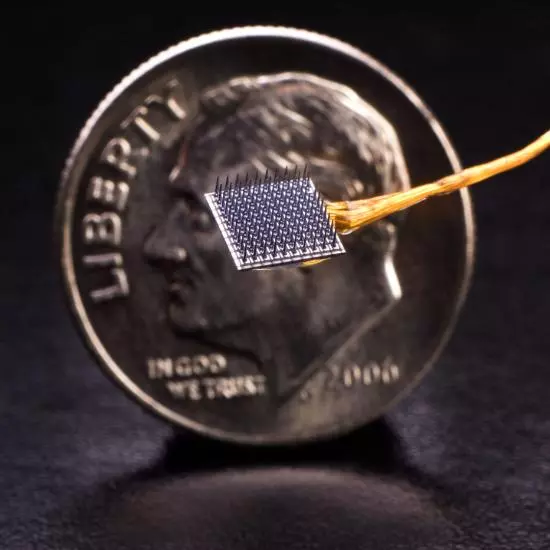Last April, for the first time since she became paralyzed 15 years ago, a 58 year-old woman was able to get herself a drink of coffee – she did so via a robotic arm, which was controlled by her thoughts. Although that rather astounding feat took place over a year ago, it was just made public today, in a report published in the journal Nature. The woman was a volunteer test subject, in a clinical trial of the experimental BrainGate neural interface system. Although still very much in development, the system could someday restore mobility to people who have suffered paralysis or limb loss.
The trial was a collaborative effort of the Department of Veterans Affairs, Brown University, Massachusetts General Hospital, Harvard Medical School, and the German Aerospace Center (DLR). It had two participants – the woman and a 66 year-old man, identified only as S3 and T2, respectively. Both of them had lost the use of their limbs years ago, due to brainstem strokes. They manipulated two different robotic arms, designed by the DLR Institute of Robotics and Mechatronics, and DEKA Research and Development Corp.
The business end of BrainGate, however, is a silicon microelectrode array that was implanted in each subject’s motor cortex (a part of the brain that’s associated with voluntary movement). That array is described as being about the size of a baby Aspirin, and contains 96 separate electrodes. An output cable leads from that array, to an external port on top of the user’s head.

When the participants thought of their arm performing a certain action, neurons adjacent to the array fired accordingly. Due to the subjects’ paralysis, this did not result in the movement of their arm, which it would do in a non-handicapped person. The electrical activity of the neurons was, however, picked up by the electrodes. This data was fed (via the cable) to a linked external computer, which translated the activity into instructions for the robotic arm.
Over the course of four days, the woman and man used this setup in a series of exercises. Some of these involved trying to grab foam targets, within 30 seconds of their popping up in different locations. When using the DEKA arm and hand, which has a wider grasp, the woman was successful 66.7 percent of the time, while the man managed a figure of 62.2 percent. Both subjects experienced much higher success rates when it came to simply touching the targets.
According to a press release from Rhode Island's Brown University, where BrainGate was developed, “The study represents the first demonstration and the first peer-reviewed report of people with tetraplegia [also known as quadriplegia] using brain signals to control a robotic arm in three-dimensional space to complete a task usually performed by their arm.”
As mentioned, the woman went a step further than grabbing the foam targets, and used the arm to grasp a bottle of coffee from a table, move it over to her face, and then tilt it so she could sip the coffee through a straw. She subsequently had the arm return the bottle to the table. The researchers were impressed both that the motor neurons in her brain were still active after 15 years of essentially being “disconnected,” and that her microelectrode array still functioned properly five years after being implanted.
The system still needs to refined – it would definitely be preferable to make it wireless, for instance, so that users didn’t have to be hard-wired to a computer through the top of their head. Nonetheless, the scientists are enthusiastic about what has been accomplished so far.
“Our goal in this research is to develop technology that will restore independence and mobility for people with paralysis or limb loss,” said lead author of the report, Dr. Leigh Hochberg. “We have much more work to do, but the encouraging progress of this research is demonstrated not only in the reach-and-grasp data, but even more so in S3’s smile when she served herself coffee of her own volition for the first time in almost 15 years.”
A video of that moment can be seen below.
Sources: Brown University, NINDS




